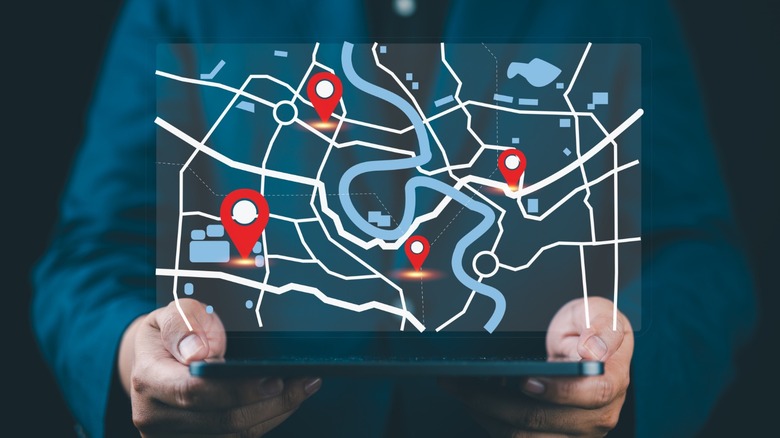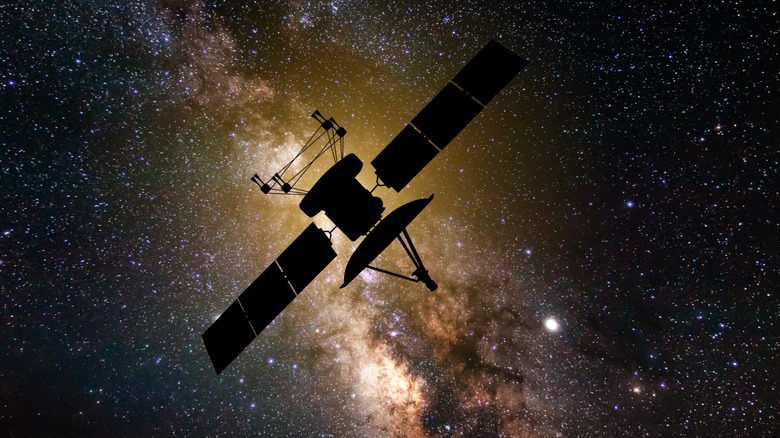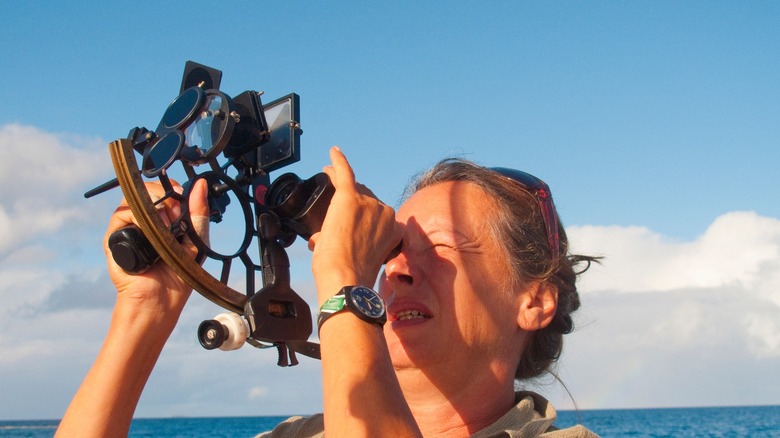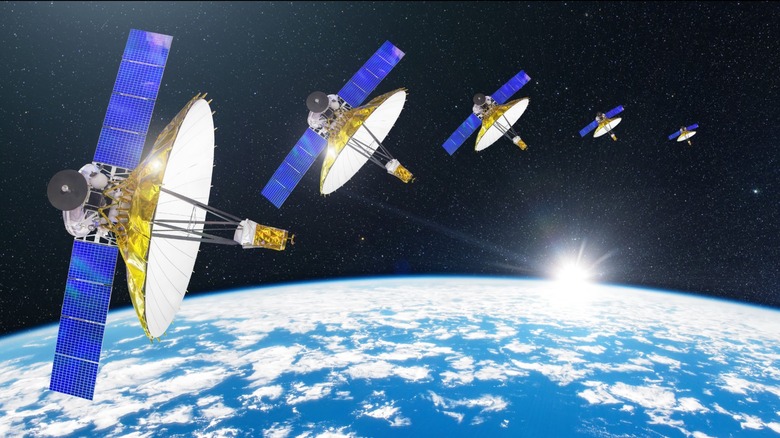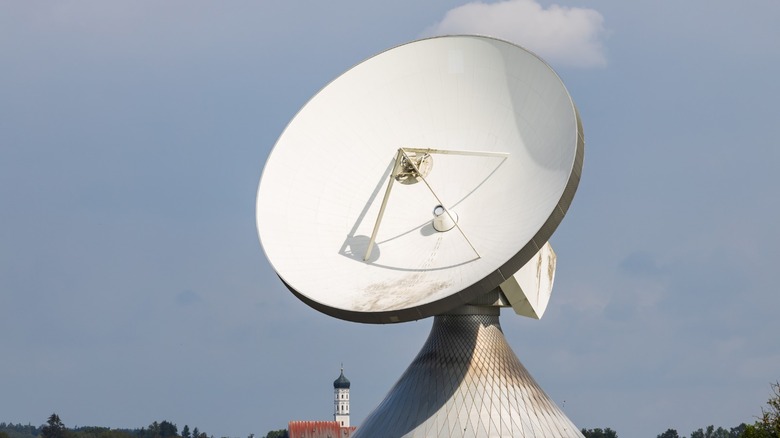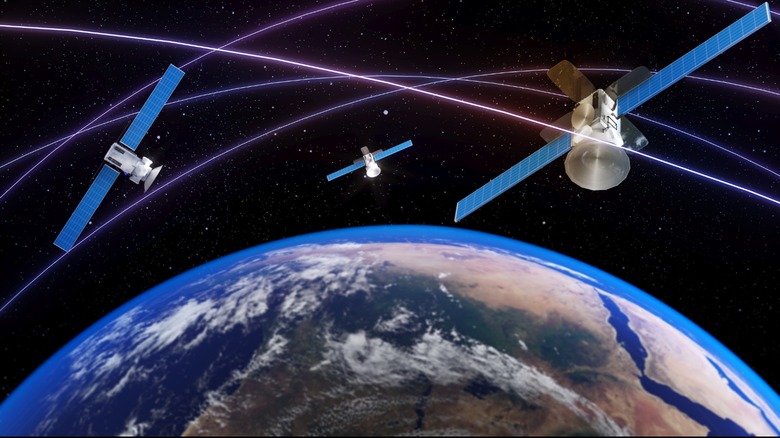What Does GPS Stand For And How Exactly Does It Work?
Many of us take navigation for granted; when we're lost, we simply pull out our phones and open Google Maps to find where we are. You could even ask Siri to give you directions if you don't want to be bothered getting your iPhone out of your pocket.
You don't need Wi-Fi or a mobile data connection to find your location, either. As long as your phone has a pre-loaded map of your area, it can accurately place you anywhere on Earth so long as you can see the sky. So, whether you're walking in an urban jungle, trekking through the woods, climbing a mountain, sailing the seas, or even soaring through the sky at 35,000 feet, your phone can tell you where you are.
This technological marvel that allows us to find our way around is powered by GPS, and it's available in every smartphone, many tablets, several car models, and even smartwatches. But what exactly is GPS, and how does it know where you are?
What GPS means
GPS means Global Positioning System, and it uses a constellation of satellites to help you locate where you are. The U.S. military developed a satellite-based navigation system called Transit in the 1960s to help its missile submarines get accurate fixes, allowing them to launch their deadly nuclear payloads with extreme accuracy. But in 1973, the Department of Defense launched the current Global Positioning System, eventually supplanting Transit in 1995, making GPS one of the military inventions we use daily.
However, the key event that led the U.S. government to make GPS available for civilian use was the tragic shooting down of the Korean Airlines 007 in 1983. Investigations revealed that the pilots used the wrong navigation mode, and since they had no access to GPS, they could not accurately determine where they were, causing them to stray into Soviet Air Space. Because of this, they were shot down by a Soviet fighter plane, resulting in the loss of 269 passengers.
This event pushed President Reagan to make GPS available for civilian use. While it formerly required dedicated receivers to use, technological advancements have allowed even the smallest of devices, like smartphones and smartwatches, to come equipped with it. When combined with other technologies like Bluetooth, it can make navigation and location extremely accurate — much like how an Apple AirTag works.
It uses the same principle as celestial navigation
Before satellites were invented, mariners used celestial navigation to find their place on Earth. They used a tool like a sextant to measure the angle of a certain star above the horizon, marking the exact time that they saw that star, knowing that they were sitting along the circumference of a circle with the star at its center. They could then repeat this procedure for two more stars, and they'll be able to find their exact location on the globe.
GPS navigation uses the same principle, but instead of relying on stars or the sun to find our location, our devices use satellite signals. We currently have over 30 GPS satellites orbiting the Earth at around 20,200 kilometers or about 12,550 miles above us, with at least four always visible from any point on Earth's surface.
Your device would look for at least four satellites to find its position. Once it detects the signals from these satellites, it can automatically compute its location, giving you almost real-time information with an accuracy of 16 to 100 feet or 5 to 30 meters.
Why you need four satellites to get a GPS fix
One thing you might notice is that while celestial navigation uses three reference points to help you find an accurate position, GPS uses four satellites. The sailors of old typically used flat maps to find their position, so three reference points would suffice. Since GPS devices move in three dimensions, you need a fourth satellite so that you can find your precise location in space.
Aside from that, your device also needs precise time-keeping to ensure that you get the most accurate signal from just three satellites. This means that our phones must be equipped with an atomic clock if we want to know that we're getting accurate directions. Since these devices are expensive and typically thicker than a phone, it would be inconvenient to have them in our device. Instead, GPS uses a fourth satellite to verify the information that you receive, allowing you to get high accuracy.
Controlling the GPS satellites
As the name suggests, GPS is a complete system, meaning it has many different segments. While we only think of the satellites (Space Segment) and our own devices (User Segment) as the parts of GPS, it also has one other important segment: the Control Segment.
The Control Segment is a network of ground facilities that monitor the 31 GPS satellites currently orbiting the Earth to ensure that they're exactly where we need them to be and that they're sending the correct data. This is also the team that maintains the satellites, ensuring that they're all up to date, and maneuvers them to the correct location as needed, ensuring that all GPS users will see a minimum of four satellites all the time.
This segment consists of a master control station at Schriever Air Force Base in Colorado, an alternate master control station at Vandenberg Air Force Base in California, 11 command and control antennas, and 16 monitoring sites located globally. The 16 monitoring sites track and measure the GPS satellites and forward the data to the master control stations. This is then processed by the master control station, and, if it needs to send out a command, it does so via the 11 command and control antennas. This ensures that GPS is working 24/7, ensuring accurate and precise navigation data for all of its users.
GPS has competition
While GPS is synonymous with satellite navigation today, it's not the only one that provides this service. The generic term for GPS is actually GNSS, or global navigation satellite system, and other countries and organizations have built their own.
China has the BeiDou Navigation System (BNS), which was formally commissioned in 2020 and has 35 satellites, while the EU has Galileo, which was launched in 2016 and has over 24 satellites at the moment. Russia also has GLONASS, which is called Globalnaya Navigazionnaya Sptunikovaya Sistema in Russian or Global Navigation Satellite System in English.
Aside from these, India also has the India Regional Navigation Satellite System (IRNSS), which is now renamed to Navigation Indian Constellation (NavIC) and has seven satellites to cover the Indian Region. Japan also launched the Quasi-Zenith Satellite System (QZSS), with four satellites in 2018, and currently has more than seven satellites, all focused on East Asia and Oceania.
All these GNSS services could work on the same phone, provided that your manufacturer supports it. That's why Google Maps changed the navigation game; by being able to use many different GNSS providers (based on your phone), it could deliver the best, most accurate mapping and navigation service to just about anyone with a smart device.
